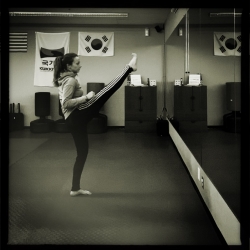
Young Athletes and Martial Arts Injuries

Are martial arts too dangerous for our kids? Nowadays most traditional martial arts schools do more than teach martial arts. Many have become before school or after school care centers for children… Many parents want a place for their kids to spend time after school. Some want help with school work as well.. Martial arts classes are fun additions, but not the main reason why they sign up their kids. I strongly encourage everyone to choose a martial arts center for their kids over a “regular” after school program.
Benefits of Exercises
We all know the benefits of exercise. Parents are happy that kids spend time moving their arms and legs on a mat rather than their eyes and fingers on a keyboard. This is important more than ever, in an age of homeschooling and virtual learning. Traditional martial arts are a great way for kids to improve their physical fitness, gain more balance, flexibility and strength. Traditional martial arts teach kids to be ok respectful, self-confident and self-aware. Young athletes in team sports also benefit from martial arts training. They tend to enjoy a better understanding of movement and coordination.

Is Training Safe for Kids?
Some parents might be concerned about the risk of kids getting injured at a very young age. Both Taekwondo and Karate present risks to the lower extremities via kicking. Knees and ankles are at risk when kids perform jumping kicks and land incorrectly. Elbow and wrist injuries might happen when kids fall on the mats, punch, or block a kick. It’s important to pay attention to how schools deal with injuries. Ask your child if their cut was washed with water and bandaged? Was a bruise treated with ice? How long was the ice applied?
No matter which Martial Art a parent chooses, they should take time to watch classes, talk to the instructors after class, and ask the right questions. Traditional martial arts are safe for young athletes if taught correctly. Watch the instructor teach your kids. Pay attention to how they explain basic moves. Too often parents wait for their kids in the designated area, working on their laptops or talking on their phones.
Watch the Instructors, Ask Questions
Some instructors don’t pay enough attention to teaching proper technique, or they don’t correct basic movements.
When kids are sparring, pay attention to how instructors deal with a kid who is crying after being kicked. It happens so often that some kids quit because they don’t enjoy sparring. They get hurt and they start avoiding sparring classes. Oftentimes parents want them to stop too. Sparring can be and often is taught correctly. Yes, there is a greater risk of injury. In my (pre COVID) experience, we taught sparring often and well. Kids had the opportunity to get familiar with it. We paired kids based on skill level and body build. There were always enough instructors to watch them and to make sure everyone was safe.
Instructors must emphasize proper technique and self control. Kids should know not only how to score points in sparring but also how to help teammates that are below their skill level. Sparring is a great cardio workout, and it can be fun!
As a parent with one or more kids at a martial arts school, ask yourself simple questions. How often there are new instructors at your school? How long do they stay? Do they have knowledge of basic anatomy? How are they explaining exercises, kicks and stretches? Do they spend enough time to warm up and stretch? How often the instructors train? What does their progression look like? Do they test? When was the last time your kid’s main instructor got a belt promotion?

Choose the right school
In conclusion I think traditional martial arts training is safe for young athletes. However, don’t choose the school only because it’s the one closest to your house. Take time to evaluate the school by watching classes, talking to the instructors, and asking questions. Remember to watch your kid as often as you can!
- Young Athletes and Martial Arts Injuries - November 11, 2020
- Martial Journal Spotlight: Anthony DelMar On Adults in Traditional Martial Arts - April 3, 2020
- Ankle Mobility Stretches for Martial Arts - February 24, 2020

Ms Anna, I am really impressed with this article-great job !!